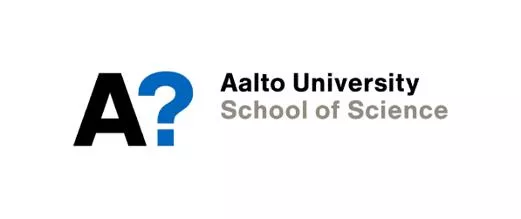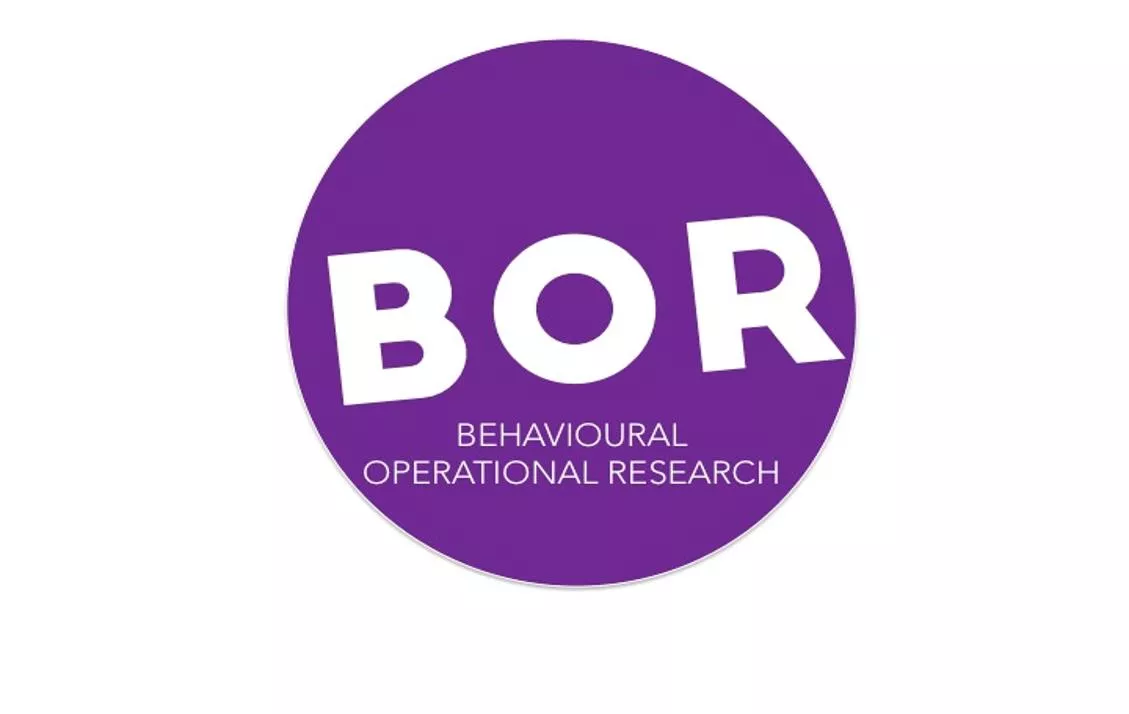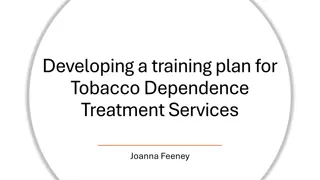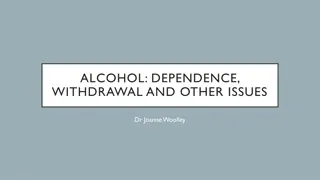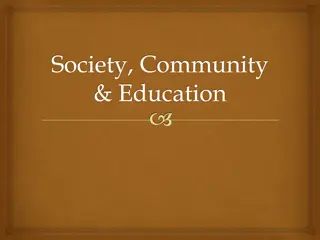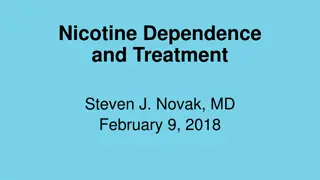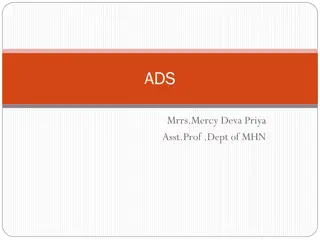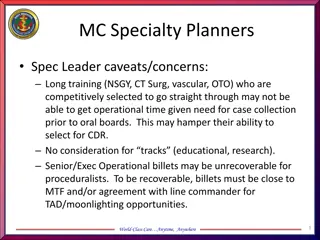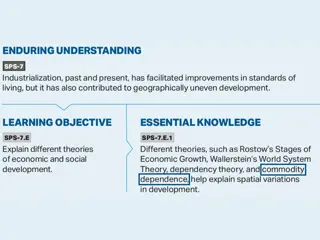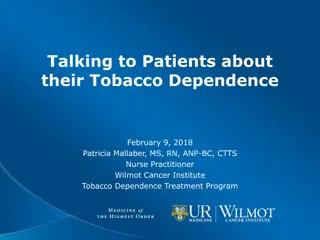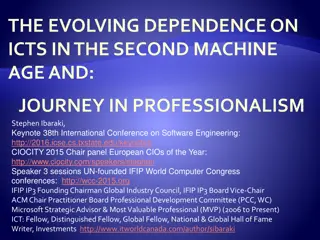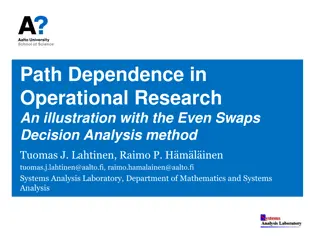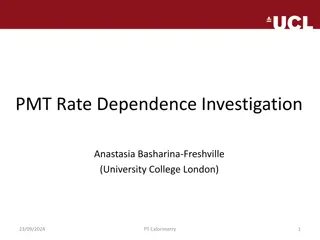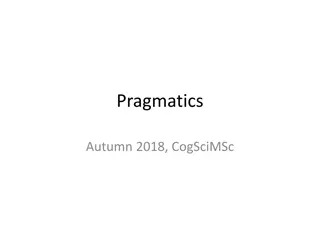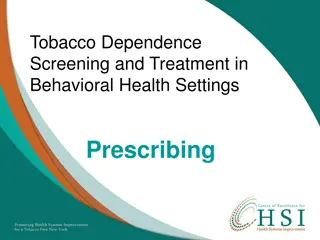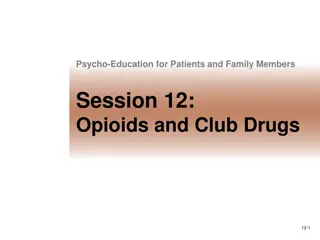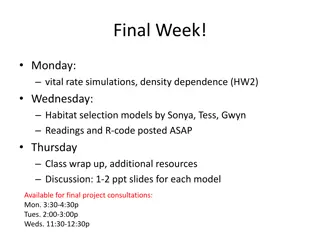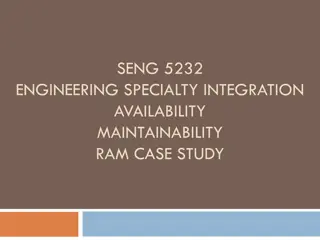Path Dependence in Operational Research
Path dependence plays a crucial role in Operational Research (OR) affecting outcomes based on the path followed. This concept is evident in various aspects of OR processes like problem framing, model choice, data collection, and implementation. Recognized early in OR literature, path dependence highlights the influence of biases, errors, and decision-making pathways on final results. By being aware of path dependence phenomena, practitioners can make informed choices and avoid being locked into suboptimal approaches.
Download Presentation

Please find below an Image/Link to download the presentation.
The content on the website is provided AS IS for your information and personal use only. It may not be sold, licensed, or shared on other websites without obtaining consent from the author.If you encounter any issues during the download, it is possible that the publisher has removed the file from their server.
You are allowed to download the files provided on this website for personal or commercial use, subject to the condition that they are used lawfully. All files are the property of their respective owners.
The content on the website is provided AS IS for your information and personal use only. It may not be sold, licensed, or shared on other websites without obtaining consent from the author.
E N D
Presentation Transcript
SUMMER SCHOOL 2016 FINLAND
Path Dependence in Operational Research Tuomas J. Lahtinen Presentation is based on joint research with Raimo P. H m l inen tuomas.j.lahtinen@aalto.fi, raimo.hamalainen@aalto.fi Systems Analysis Laboratory, Department of Mathematics and Systems Analysis Summer School on Behavioural Operational Research 20.5.2016 The document can be stored and made available to the public on the open internet pages of Aalto University. All other rights are reserved.
Paths in modelling A modelling process: A set of instructions or an abstraction of what happens in modelling Path is the realization of the process, i.e. what actually happens in the OR problem solving effort Can be different and lead to a different outcome every time the process is carried out. Remember that words and vocabulary matters!
Steps in OR paths Initial meeting between problem owners and modelers Forming the problem solving team Problem framing and structuring Choice of model Order in which the parts of the model are specified and solved Data collection, preference elicitation Communication with the model Implementation
Path dependence: Outcome depends on the path followed
Path dependence implicitly recognized already early in the OR literature Examples: Best practices: Morris (1967), Mulvey (1979) Model validity: Landry et al. (1983) Adaptive problem solving: Little (1970)
Mulvey 1979, Strategies in Modeling: A personnel Scheduling Example, Interfaces Given a single decision problem, two practitioners who are steeped in diverse techniques such as mathematical programming and simulation will invariably develop models which use their particular expertise even though the real prolem is identical. Nothing is inherently wrong with this bias
Phenomena which make path dependence interesting We can choose a path which seems valid and reasonable but leads to a poor outcome Biases and errors can accumulate along a path the overall effect matters One can become locked-in to an inferior approach
Lock-in The development of strong anchor points from which it is not easy to move forward. E.g. QWERTY layout (David 1985) Can occur also due to behavioural reasons
What are the factors that steer the path and create lock-ins?
Origins and drivers of path dependence in OR H m l inen and Lahtinen (2016): System Learning Procedure Behavior Motivation Uncertainty External environment Can interact and occur together Relate to context, actors, praxis and methods
System Formed by the people involved in the problem solving process Lock-in to one approach. Groupthink, working with our models This is the right model Yes Yes Irreversibility. Due to budget, time or resource constraints Yes Yes Yes Also the system under study Mathematical : Increasing returns, bifurcations, feedback loops
Learning Problem owners, stakeholders and modelers learn about the problem: revise assumptions, redirect the process Unlearning preconceived solutions is difficult Lane (1993), Systems Dynamics Review: all (problem) formulation approaches that use the tools of system dynamics at the start of the process rapidly converge the debate onto issues with a strong time-evolutionary dimension
Procedure Different processes, methods, modeling approaches can lead to different outcomes Structures and properties of the methods used interact with the other drivers of path dependence Examples Technical properties, convergence algorithms Order of problem solving steps Problem and model decomposition
Behavior Cognitive biases and behavioral phenomena related to individuals Behavioral lock-in The sunk cost effect / status quo bias in modelling An organization can keep on using the old model which has grown excessively and become unwieldy and nontransparent
Accumulation of bias A Ideal process = no bias B C
Accumulation of scale compatibility and loss aversion in the Even Swaps process Scale compatibility = more weight to measuring stick Loss aversion = more weight to loss DM chooses A? DM chooses B?
Motivation Relates to exposed and hidden goals People can promote their own interest and behave strategically in the OR process Higher risk in messy and controversial problems
stakeholders tended to request the inclusion of objectives that favoured their preferred alternative (von Winterfeldt and Fasolo, 2009, Structuring decision problems: A case study and reflections for practitioners) in many real life circumstances, experts perform the service of hired guns for companion directors or for politicians, justifying preconceived decisions scientifically (Rauschmayer et al. 2009, Why good practice of OR is not enough Ethical challenges for the OR practitioner)
Uncertainty Can be about structural assumptions and correct parameter values High level of uncertainty No one right path Higher sensitivity to initial modeling choices Examples: Climate modelling: structural assumptions Real options modeling: Parameter values with market data or subjective estimates?
Changes in the context and external environment Problem environments can change The chosen modeling process becomes invalid or it can lead to a different outcome. Example: Timing of an OR intervention Postpone to gather more accurate information? If environment changes, some paths may become unavailable
Is path dependence a risk? Not necessarily if goal is to increase understanding Trying different paths can be beneficial to learning Awareness of path dependence can be enough Path dependence poses a risk When seeking for optimal and efficient solutions In important policy problems, normative decision support
Awareness Challenge the modelling team to reflect on the drivers of their behavior including the implicit assumptions and mental models the choices made along the path Consider the possibility of lock-ins: Early steps and framing are critical Has mental lock-in already occurred? Can it be broken?
Use of multiple models More than one problem solving process with different teams Helps to consider a larger variety of alternative problem formulations and model structures Devil s advocate team? to find and challenge crucial assumptions to perform worst case analyses Confidence about a solution increases if a similar solution is obtained with another model
Adaptive problem solving Announce checkpoints where process can be revised E.g. when intermediate results are obtained, learning has occured, new data becomes available Ensure availability of resources Helps to cope with changes and uncertainty in the modeling environment
Debiasing Reducing effects of cognitive biases in preference elicitation and in estimation tasks Some ideas: Reframe questions, give better training, calibrate judgments Biases can accumulate but they can also cancel out One can try design the elicitation process so that effects of biases cancel out Example of such procedure for Even Swaps in Lahtinen, H m l inen (2016) => Not always necessary to debias single judgments
A B C
Example: Trade-off weighting Assume Real weights are ?1= 33%,?2= 33%, ?3= 33% Thus?1 ?2should be 1 But measuring stick bias doubles weight in trade-off assessment: ?1 ?2= 2 Elicitation 1: ?1 ?2= 2,?2 ?3= 2 => Derive unique weights: 57%, 29%, 14%
Example: Trade-off weighting Assume Real weights are ?1= 33%,?2= 33%, ?3= 33% But measuring stick effect doubles weight in trade-off assessment: ?1 ?2= 2 Elicitation 1: ?1 ?2= 2,?2 Elicitation 2: ?3= 2 => Derive unique weights: 57%, 29%, 14% ?1 ?2= 2,?2 weights: 33%, 33%, 33% ?3= 2,W3 W1= 2 => Take least squares average =>
Conclusions The term path is new in modelling Path dependence is a real phenomenon in OR Can originate due to behavior, social interaction, technical properties of procedures, changes in external environment Extra concern in large policy problems and in prescriptive decision support There are ways to cope with path dependence!
Thank you Lahtinen TJ, H m l inen RP (2016) Path dependence and biases in the even swaps decision analysis method, European Journal of Operational Research, special issue on Behavioural OR. H m l inen RP, Lahtinen TJ (2016) Path Dependence in Operational Research How the Modeling Process Can Influence the Results, Operations Research Perspectives. Available at http://sal.aalto.fi/publications/ Photo by Dioboss, CC BY-NC-SA 2.0



